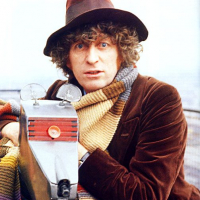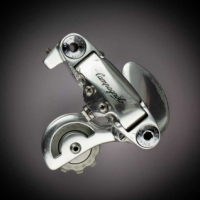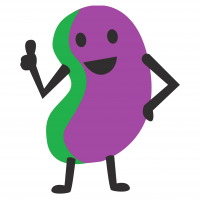Lance Armstrong gets life ban,loses 7 TDF,confesses he doped
Comments
-
Ref Big Mig - no-one really stands to gain from ratting him out, unlike in the US case.
Plus there's no appetite in the Spanish system to do so, unlike with Tygart at USADA.
When you're banging 3+ minutes into everyone in TDF TTs in the early 90s, and climbing with the best (albeit also likely on EPO) at 82kg, it does look a bit suspect in hindsight.
There was some comments when Martin Fiz won the European & then World Championship Marathons in 94 & 95 that he had the same coach or Doctor (Can't recall the precise details - it was said as an aside at the time, rather than an accusation) as Indurain but no idea who that referred to.
Spanish endurance running came from nowhere to be very powerful from 92 (Barca OG) onwards in the 90s. It's now poor again apart from a few guys b(r)ought in from Africa.0 -
YorkshireRaw wrote:Ref Big Mig - no-one really stands to gain from ratting him out, unlike in the US case.
Plus there's no appetite in the Spanish system to do so, unlike with Tygart at USADA.
When you're banging 3+ minutes into everyone in TDF TTs in the early 90s, and climbing with the best (albeit also likely on EPO) at 82kg, it does look a bit suspect in hindsight.
There was some comments when Martin Fiz won the European & then World Championship Marathons in 94 & 95 that he had the same coach or Doctor (Can't recall the precise details - it was said as an aside at the time, rather than an accusation) as Indurain but no idea who that referred to.
Spanish endurance running came from nowhere to be very powerful from 92 (Barca OG) onwards in the 90s. It's now poor again apart from a few guys b(r)ought in from Africa.
Spanish athletes and teams across the board, sport-wise, had a boom time in the 90s. Eufe....*points finger*0 -
When Fermin 'I look and run like Robin Williams' Cacho broke Steve Cram's European 1500m record, things were certainly very wiffy.0
-
Aside from the nice/nasty aspect, the difference between Big Mig and Lance is before/after Festina. There was a line drawn in the sand then, there was an opportunity to clean things up. '99 was the year of the two-speed peloton. Lance wasn't in the slow half.Warning No formatter is installed for the format0
-
I sat through the Armstrong Lie documentary last night for the 3rd time. I still can't quite square the circle.
I suppose we should be grateful he 'got busted' because at least the UCI took steps and didn't sweep the problem underneath the carpet as a 'yesteryear' problem and with all the scandals in athletics, at least cycling isn't the bogey sport anymore.seanoconn - gruagach craic!0 -
UCI were left with no choice.
I'm still not convinced that Big Mig was on the sauce though. He was a superior specimen, much like Bolt.0 -
He was big and heavy and left Rominger who was small and light behind up the mountains. Perhaps Rominger's doctor wasn't so good.seanoconn - gruagach craic!0
-
Indurain had good results in stage races in the mid to late 80s. While I believe he was probably on the sauce, equally he wasn't some no mark in the pre-EPO years either.Pinno wrote:He was big and heavy and left Rominger who was small and light behind up the mountains. Perhaps Rominger's doctor wasn't so good.Twitter: @RichN950 -
Garry H wrote:
You mean the little guy that held the hour record whilst being coached by Ferrari?Pinno wrote:He was big and heavy and left Rominger who was small and light behind up the mountains. Perhaps Rominger's doctor wasn't so good.
Ferrari was still honing his road coaching skills back then.seanoconn - gruagach craic!0 -
RichN95 wrote:
Indurain had good results in stage races in the mid to late 80s. While I believe he was probably on the sauce, equally he wasn't some no mark in the pre-EPO years either.Pinno wrote:He was big and heavy and left Rominger who was small and light behind up the mountains. Perhaps Rominger's doctor wasn't so good.
There some sort of quote (not sure how genuine) that Mig became disillusioned in 96 with what Riis etc. were up to - along the lines of 'if they want to go to Italy and do all that stuff, that's up to them, but it's not for me' - doesn't mean he wasn't using gear but maybe some of the more sordid aspects of transfusions etc. were not to his taste.
Or maybe he was just pee'd off that he'd been beaten in the Tour that year.0 -
RichN95 wrote:
Indurain had good results in stage races in the mid to late 80s. While I believe he was probably on the sauce, equally he wasn't some no mark in the pre-EPO years either.Pinno wrote:He was big and heavy and left Rominger who was small and light behind up the mountains. Perhaps Rominger's doctor wasn't so good.
Whereas Rominger, much like Riis and Chiapucci really were complete non-entities until the arrival of EPO.
IMHO, I think Big Mig might have been a Domoulin type character (with better TTing) if sauce did not come into the equation. Top 10 in GTs, monster rouler and time triallist, decent in the mountains. He would not have been a 5 time Tour, 2 time Giro winner.
The points above about Armstrong taking advantage of the peloton cleaning up and of him being a total sociapath are what differentiates the two.It's a little like wrestling a gorilla. You don't quit when you're tired. You quit when the gorilla is tired.0 -
Appreciate it's a tucker source (I believe), but worth a look:

https://sportsscientists.com/2009/07/to ... estimates/
Slighty sceptical, since an 80s bike is considerably sh!tter than a '00s bike, but you get the idea.0 -
Problem with that is summised in the word 'estimates'.
They've no idea about accurate rider or bike weights on those days. Plus as has been discussed a lot before, the nature of the stage, how it's raced, where it comes in the GT, weather etc. all have a bearing on what w/kg may be being produced on climbs.
Plus how have the climbs chosen for comparison been selected?
Timing up climbs itself is also debunked for the same reasons above, although one that's raced as a final climb quite a lot, and by all the big guns has been Alpe d'huez. They also 'officially' time it - times have been a lot slower since the days of Pantani's 35/36 minutes or whatever it was.
In one of the recent editions I think only a few guys broke 40 minutes.0 -
Is there a reason why epo would benefit a big guy relatively more than a small guy. I don't mean this rhetorically btw - just interested why dope would propel Indurain to become a grand tour winner over smaller riders who would have beaten him clean.
I get that some riders benefit more than others from the same taking the same gear but there must have been some talented small riders who were also responded well to the gear they were on.[Castle Donington Ladies FC - going up in '22]0 -
There's a theory that the reason there was a lull in the number of Colombian climbers competing at the top level in the 90s / early '00s (big lumps like Botero excepted) is because EPO negated their natural climbing advantage - naturally bigger flatlanders with lower HCT counts could also gain the o2 carrying capacity needed for the big climbs, whereas Colombians with likely naturally higher HCT couldn't boost (as much), nor could they go the other way and gain the power to compete in TTs.
lb for lb a strong big guy will beat a strong small guy, except when gravity is involved - take away the impact of that gravity somewhat and the big guys have a clear advantage.
Having said all that doping at lower levels in Colombia is supposedly rife, so that may render the above a bit ball-cocks (but I suppose there's no testing either so HCT counts could be sky high).0 -
Weird part of all this is that NEITHER side in this thing is going to look GOOD. No matter what the outcome(if there even is one). Everyone(winners and losers) involved will look like money grubbing fools. Then again, with so much money to be gotten or kept I'm sure that doesn't surprise anyone. Still, a lot of money will wash off all kinds of stink.0
-
DeVlaeminck wrote:Is there a reason why epo would benefit a big guy relatively more than a small guy. I don't mean this rhetorically btw - just interested why dope would propel Indurain to become a grand tour winner over smaller riders who would have beaten him clean.
I get that some riders benefit more than others from the same taking the same gear but there must have been some talented small riders who were also responded well to the gear they were on.
I'm an engineer, not a sports scientist or medical professional. The bigger cyclist has more muscle for the oxygen to get to, period. If you can feed the nutrition and oxygen, after a while the advantage of the lighter climber is gone since the heavier rider now has enough strength to overcome the disadvantage in weight.
Like two cars going uphill. A lighter car isn't the only consideration going up Pikes Peak. Ultimate horsepower is as well.0 -
Ah, yes! So that'll explain why just as many mountain stages are won by big heavyweight rouleurs as lightweight climbing snakes. Oh, hang on...burnthesheep wrote:I'm an engineer, not a sports scientist or medical professional. The bigger cyclist has more muscle for the oxygen to get to, period. If you can feed the nutrition and oxygen, after a while the advantage of the lighter climber is gone since the heavier rider now has enough strength to overcome the disadvantage in weight.
Like two cars going uphill. A lighter car isn't the only consideration going up Pikes Peak. Ultimate horsepower is as well.0 -
The composition of the weight is important as well. The more lean muscle that's contributing to the weight, the better. It's very much a case of diminishing returns though, if there's too much weight, lean muscle or not, there's only so much improvement that can be made.0
-
Mad_Malx wrote:Rick Chasey wrote:Edit: cn archive says that epo started in sports around 1990, so looks like the answer to the last q is yes.
I seem to recall that Steven Rooks is on record as saying that EPO-use by pro cyclists started in August 1989, to the best of his knowledge. Going on the comments of Greg LeMond, Robert Millar, Sean Kelly and others, the noticeable change in race pace and "gruppetto fodder out-climbing thoroughbred grimpeurs" started in 1991.
DD.0 -
Epogen, Amgen's original product, was approved for sale in 1989Mad_Malx wrote:Were industrial quantities of EPo even available in the early 90s? I was working on recombinant proteins at the time and the cost for clinical grade material would have been astounding (even for rich teams).
Edit: cn archive says that epo started in sports around 1990, so looks like the answer to the last q is yes.Twitter: @RichN950 -
There was a notable upswing in Endurance performances in Athletics from '93 onwards, although I suspect the likes of Baumann and Cacho (from a European perspective) were at it when they won in Barcelona in '92. When the Kenyans and Ethiopians (or their agents) got into EPO, times came crashing down.0
-
RichN95 wrote:
Epogen, Amgen's (Sponsors of the Amgen Tour of California, c.Paul Sherwin) original product, was approved for sale in 1989Mad_Malx wrote:Were industrial quantities of EPo even available in the early 90s? I was working on recombinant proteins at the time and the cost for clinical grade material would have been astounding (even for rich teams).
Edit: cn archive says that epo started in sports around 1990, so looks like the answer to the last q is yes.
FTFY ;-)0 -
To me they're Amgen of Kirin-Amgen Inc v Hoechst Marion Roussel Ltd fameYorkshireRaw wrote:RichN95 wrote:
Epogen, Amgen's (Sponsors of the Amgen Tour of California, c.Paul Sherwin) original product, was approved for sale in 1989Mad_Malx wrote:Were industrial quantities of EPo even available in the early 90s? I was working on recombinant proteins at the time and the cost for clinical grade material would have been astounding (even for rich teams).
Edit: cn archive says that epo started in sports around 1990, so looks like the answer to the last q is yes.
FTFY ;-)Twitter: @RichN950 -
^patent pedant *klaxon*!0
-
RichN95 wrote:
Epogen, Amgen's original product, was approved for sale in 1989Mad_Malx wrote:Were industrial quantities of EPo even available in the early 90s? I was working on recombinant proteins at the time and the cost for clinical grade material would have been astounding (even for rich teams).
Edit: cn archive says that epo started in sports around 1990, so looks like the answer to the last q is yes.
First heard of its use in sports around 1987 but it took a while to become mainstream0 -
0
-
8 months to fill this thread with more drivel and repetition. That's a hard ask...seanoconn - gruagach craic!0
-
It's been generally pretty quiet except when it gets in the news again.Pinno wrote:8 months to fill this thread with more drivel and repetition. That's a hard ask...0







